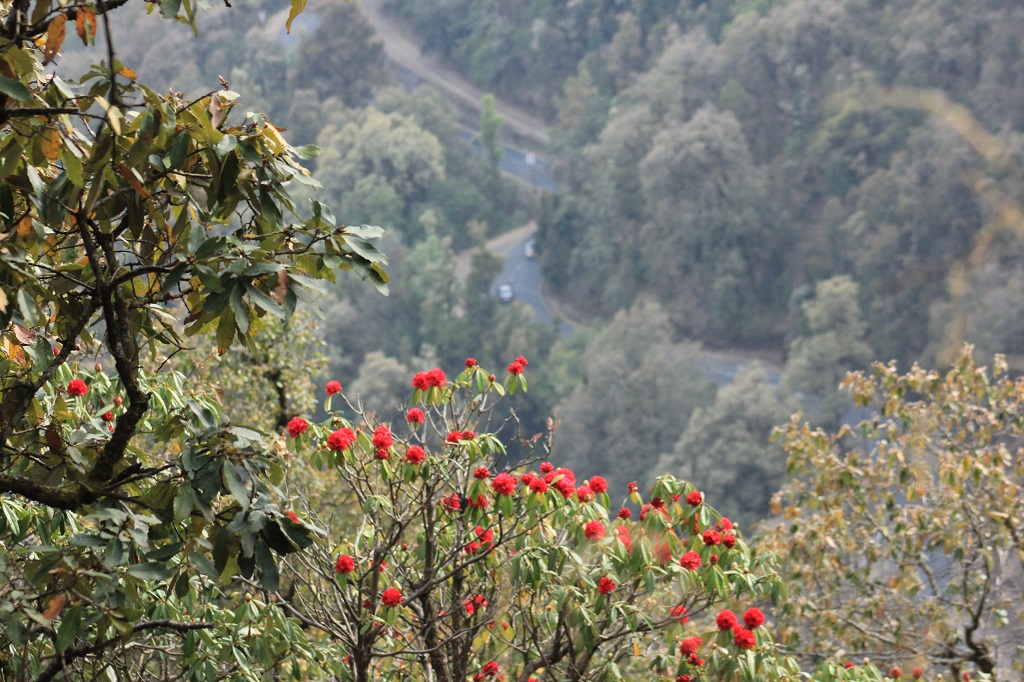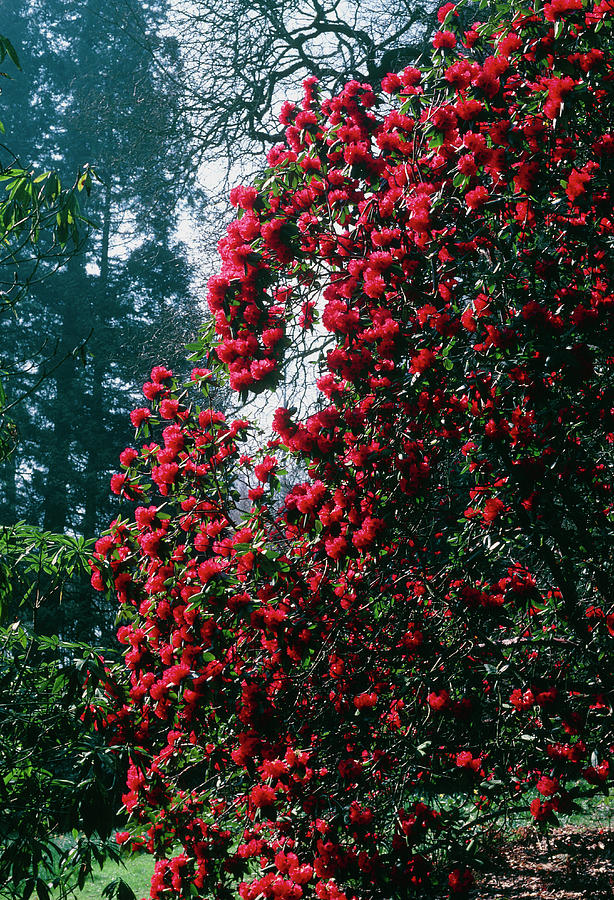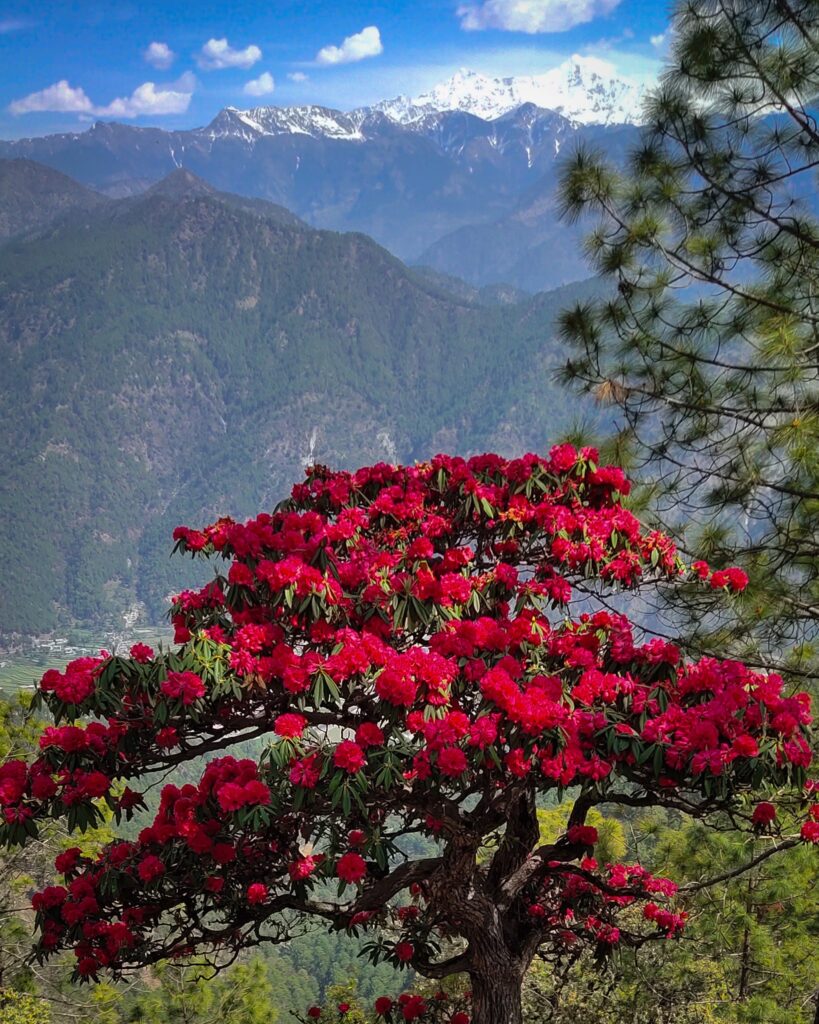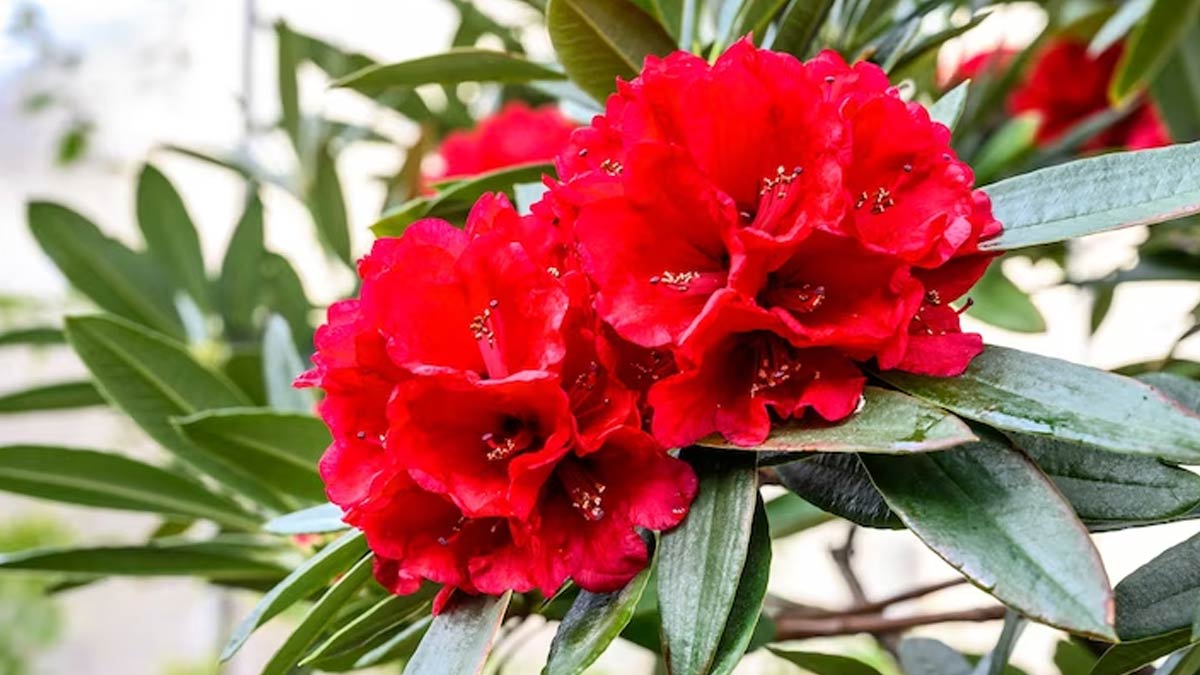Spring Unfolds a Crimson Canvas in Uttarakhand & Himachal
As winter retreats from the Indian Himalayas, an extraordinary transformation begins. The rugged slopes of Uttarakhand and Himachal Pradesh explode into a mesmerizing riot of red, pink, and white hues, thanks to the blooming of Buransh (Rhododendron arboreum). Revered as the state tree of Uttarakhand and the state flower of Himachal Pradesh, Buransh is more than just a botanical wonder—it is an emblem of cultural heritage, ecological significance, and a magnet for nature lovers.

A Symbol of the Himalayan Spring
Buransh, a species of rhododendron, thrives in the temperate zones of the Himalayas, flourishing at altitudes between 1,500 to 3,600 meters. This evergreen tree, often growing up to 20 meters in height, stands out with its striking clusters of crimson flowers, a visual delight against the deep green of mountain forests.
Botanical Significance
- Scientific Name: Rhododendron arboreum
- Blooming Season: March to May
- Varieties: Red (most common), Pink, and White
- Habitat: Temperate Himalayan forests
- Ecological Role: Supports pollinators like bees, birds, and butterflies
Buransh’s vibrant presence is a key indicator of a healthy Himalayan ecosystem, supporting biodiversity and protecting fragile mountain soils from erosion.
The Spectacle of Buransh Blooming
Every spring, the gradual ascent of blooming Buransh traces the altitudinal shift in seasons. Lower-altitude trees start flowering in early March, while higher-altitude regions witness peak bloom by late April or May. For travelers and photographers, this means a two-month-long floral spectacle, offering ample opportunity to witness this seasonal marvel.
Best Time to Experience the Bloom
- March to April → Lower Himalayan regions (1,500m – 2,000m)
- April to May → Higher Himalayan regions (2,500m – 3,600m)
Where to Witness the Buransh Phenomenon
If you are planning to embark on a journey to witness this crimson spectacle, here are some of the best locations across Uttarakhand and Himachal Pradesh:

Uttarakhand
- Valley of Flowers National Park – A UNESCO World Heritage Site, home to an incredible diversity of flora, including Buransh.
- Chopta & Tungnath – Known as the ‘Mini Switzerland of India,’ this region offers breathtaking Buransh-covered slopes.
- Kausani – A serene hill station where Buransh forests create a vibrant contrast against snow-capped peaks.
- Binsar Wildlife Sanctuary – A paradise for photographers and wildlife enthusiasts.
- Munsiyari – Famous for its picturesque trekking routes lined with blooming rhododendrons.
Himachal Pradesh
- Shimla & Kufri – Popular hill stations where Buransh enhances the spring landscape.
- Dalhousie & Khajjiar – The meadows here look even more enchanting when the Buransh is in full bloom.
- Great Himalayan National Park – A biodiversity hotspot with a significant Buransh presence.
- Kinnaur & Chitkul – The last Indian villages before Tibet, where rhododendrons bloom alongside apple orchards.
- Triund & Dharamshala – Ideal for trekkers, offering sweeping views of Buransh-clad slopes.
Buransh: A Medicinal Marvel
Beyond its aesthetic appeal, Buransh has long been valued for its medicinal properties. Locals extract its juice, believed to offer numerous health benefits:
Health Benefits of Buransh Juice
- Rich in antioxidants – Fights oxidative stress and enhances immunity.
- Heart-friendly – Helps reduce blood pressure and cholesterol.
- Anti-inflammatory – Used in traditional medicine for joint pain and arthritis.
- Digestive aid – Eases stomach disorders like indigestion and diarrhea.
- Cooling effect – Traditionally consumed in summer to combat heat exhaustion.
With rising awareness of organic and traditional health remedies, Buransh juice has gained commercial popularity, with local entrepreneurs and cooperatives producing it for wider markets.
Cultural and Folklore Significance
For centuries, Buransh has been woven into the fabric of Himalayan culture. The bright red flower symbolizes love, passion, and divine energy, often featured in:
- Religious offerings at temples dedicated to local deities.
- Wedding decorations and folk festivities.
- Poetry and folklore, with songs celebrating its arrival as a harbinger of spring.
In many villages, elders recount how the blooming of Buransh was historically seen as an omen of prosperity and good harvests.
Eco-Tourism & Conservation Efforts
As interest in Himalayan eco-tourism grows, so does the need for sustainable conservation of Buransh forests. Unfortunately, climate change, deforestation, and over-harvesting pose serious threats to this floral wonder.
Challenges to Buransh Conservation
- Climate Change: Rising temperatures and unpredictable weather patterns affect flowering cycles.
- Deforestation: Expanding roads, resorts, and agriculture encroach upon rhododendron habitats.
- Over-Harvesting: Unregulated collection for commercial use can impact wild populations.
Conservation Initiatives
- Community-Based Eco-Tourism → Encouraging responsible travel that supports local economies.
- Government Protection Policies → Conservation efforts in national parks and wildlife sanctuaries.
- Sustainable Harvesting → Promoting regulated collection practices for Buransh-based products.
Local NGOs and environmental activists are working tirelessly to educate villagers and tourists about the importance of preserving this iconic species.
Capturing the Beauty of Buransh: Photography Tips
For those hoping to document the breathtaking sight of Buransh in full bloom, here are some photography tips:
- Golden Hour Magic → Shoot during sunrise or sunset for enhanced color contrast.
- Macro Shots → Capture intricate petal details with a macro lens.
- Wide-Angle Landscapes → Show the vastness of Buransh forests with a wide-angle lens.
- Incorporate Local Life → Include village homes, shepherds, or winding mountain paths to tell a story.
Whether you are an amateur with a smartphone or a professional photographer, Buransh offers endless inspiration.
The Final Bloom: A Call to Experience and Protect
The annual blooming of Buransh is not just a natural phenomenon—it is an experience, a celebration, and a reminder of the delicate beauty of our environment. For those who have yet to witness this Himalayan wonder, spring offers the perfect opportunity to immerse oneself in its splendor.
However, as tourism grows, so does our responsibility to protect the fragile Himalayan ecosystem. Visitors are encouraged to embrace eco-friendly travel practices, respect local conservation efforts, and spread awareness about the significance of Buransh beyond its aesthetic appeal.
This spring, take a journey to the mountains, breathe in the crisp air scented with Buransh blossoms, and witness firsthand the ephemeral yet eternal beauty of the Himalayan spring.



